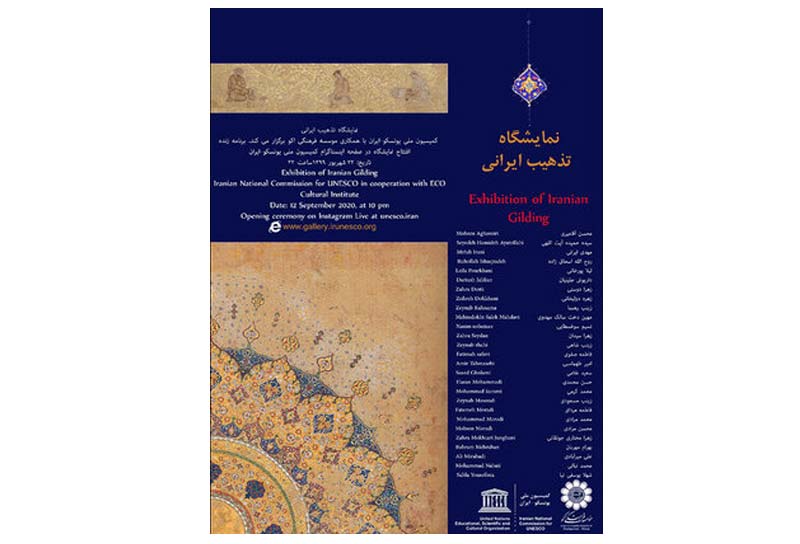Iranian illumination in Eco Cultural Institute

The National Commission for UNESCO in Iran, in collaboration with the ECO Cultural Institute, is holding an exhibition of Iranian illumination, including 27 exquisite illumination works by masters and artists, in virtual form.
According to the public relations of the National Commission for UNESCO in Iran, the exhibition of Iranian illumination includes 27 exquisite gilding works by masters and artists of this Iranian art field, which is organized by the National Commission for UNESCO in Iran and in collaboration with the ECO Cultural Institute held at the Eco Diplomatic Gallery. The exhibition will open on Saturday, September 13, at 10 pm Iranian time in the virtual gallery of the National Commission for UNESCO in Iran and at the same time on the Instagram page of the commission.
In this exhibition, the works of Mohsen Aghamiri, Seyedeh Hamideh Ayatollahi, Mehdi Irani, Ruhollah Ishaqzadeh, Leila Pourkhani, Dariush Jalilian, Zahra Doosti, Zohreh Dolikhani, Zeinab Rahnama, Mahindokht Salekmahdavi, Nasim Sofstaei, Zahra Seydan, Zeinab Shahi, Fatemeh Safavi, Amir Tahmasebi, Saeed Gholami, Hassan Mohammadi, Mohammad Karami, Zeinab Masoudi, Fatemeh Moradi, Mohammad Moradi, Mohsen Moradi, Zahra Mokhtari Junghani, Bahram Mehraban, Ali Mirabadi, Mohammad Nabati and Shahla Yousefonia Are left.
illumination Arabic words from the root of gold means gilding due to the use of real gold to decorate holy books and literary and sometimes scientific poems, it refers to a branch of books and decorative motifs.
The art of illumination is also to decorate and beautify books to further evaluate the texts used in the book, and in addition it can be said in terms of artistic value, it alone has an independent personality in the form of (bergamot, sun, crown or forehead, cover design, emblem, inscription, etc.) and has its own artistic value. Illumination usually uses original gold of various grades, sometimes silver and water-based paints, and because of the durability of the gold when we look at an old manuscript or a calligraphic work, the luster of gold and its luster still remain impressive after many years. And is visible. In illumination motifs, Islamic motifs (abstract motifs derived from plants and animals, etc.) and Khatai motifs (plant motifs) are used. In the historical process of decorative patterns and illumination, there are various doctrine before and after Islam that parts of these decorative patterns can be found in gold garments, pottery, carved and plastered reliefs in addition, he saw books and manuscripts and calligraphic works in museums and personal collections.
In different Islamic periods, gilding can be attributed to the Seljuk, Ilkhanid, Timurid, Safavid, Zandi, Qajar and contemporary doctrine divided.



